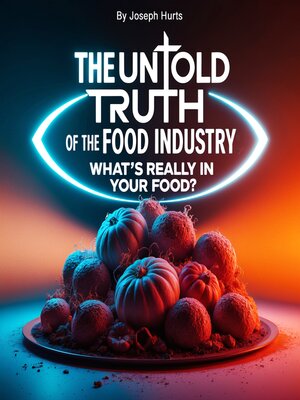The Untold Truth of the Food Industry
audiobook (Unabridged) ∣ What's Really in Your Food?
By Joseph Hurts

Sign up to save your library
With an OverDrive account, you can save your favorite libraries for at-a-glance information about availability. Find out more about OverDrive accounts.
Find this title in Libby, the library reading app by OverDrive.



Search for a digital library with this title
Title found at these libraries:
| Library Name | Distance |
|---|---|
| Loading... |
This audiobook is narrated by a digital voice.
The modern food system bears little resemblance to the agricultural practices that sustained human civilization for thousands of years. What was once a relatively simple process of growing, harvesting, and consuming food has been transformed into a complex industrial operation involving chemical inputs, genetic modification, global transportation networks, and extensive processing that fundamentally alters the nature of what we eat. This transformation has occurred gradually over the past century, making it easy to overlook just how dramatically our food has changed.
The industrialization of agriculture began in earnest after World War II, when chemical companies that had produced explosives and nerve agents during the war found new markets for their products in agricultural applications. Nitrogen-based fertilizers, organophosphate pesticides, and other synthetic chemicals became the foundation of what was promoted as a more efficient and productive agricultural system. This chemical-intensive approach to farming dramatically increased yields in the short term, but it also introduced thousands of synthetic compounds into the food chain that had never been part of human nutrition.
The scale of modern agricultural operations has grown to proportions that would have been unimaginable to previous generations of farmers. Single farms now cover tens of thousands of acres and produce millions of pounds of a single crop using machinery, irrigation systems, and chemical inputs that operate more like industrial manufacturing than traditional farming. This industrial scale has made food production more efficient in terms of labor and land use, but it has also created vulnerabilities and dependencies that affect the entire food system.







